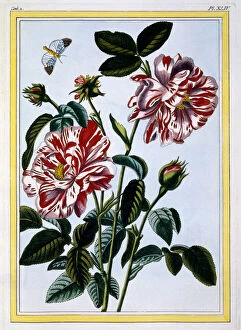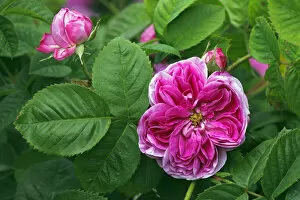Gallica Collection
"Discovering the Enchanting World Roses and their Fascinating Connections" Gallica roses, scientifically known as Rosa gallica
All Professionally Made to Order for Quick Shipping
"Discovering the Enchanting World Roses and their Fascinating Connections" Gallica roses, scientifically known as Rosa gallica, are a captivating species that have intrigued botanists and horticulturists for centuries. Among its various cultivars, such as Rosa moschata and Rosa gallica Tuscany, one can find an array of mesmerizing colors and enchanting fragrances. One notable member of this family is the Crimson officinal rose, believed to be a variation of Rosa gallica. Its deep red petals exude elegance and have been used in traditional medicine for their healing properties. Another intriguing variety is The Variegated Rose of England; although it is often mistaken for Rosa Gallica, it adds a touch of mystery with its unique appearance. Intriguingly enough, these beautiful flowers attract not only human admirers but also fascinating creatures like stick insects or phasmids and wandering crab spiders. These insects find solace among the delicate petals while adding an element of surprise to any garden adorned with Gallicas. The Provence rose (Rosa provincialis), also referred to as French rose or Provins rose (Rosa gallica), showcases the charm that these blooms hold within them. Their vibrant hues bring life to gardens across France and beyond. Similarly, the Apothecary's rose or crimson damask rose captivates onlookers with its rich fragrance reminiscent of ancient apothecaries' potions. Art enthusiasts will appreciate Curtis British Entomology Plate 685 which beautifully captures the essence of Gallicas alongside stunning stick insects fluttering around them. Additionally, Curtis British Entomology Plate 350 features Polistes gallica wasps building intricate nests amidst blooming roses – a testament to nature's harmonious coexistence. Lastly, we cannot forget about the famous historical connection between Gallicas and "Rosa Mundi.
















